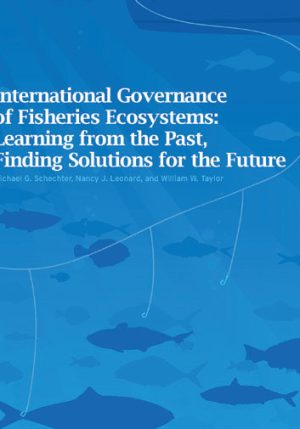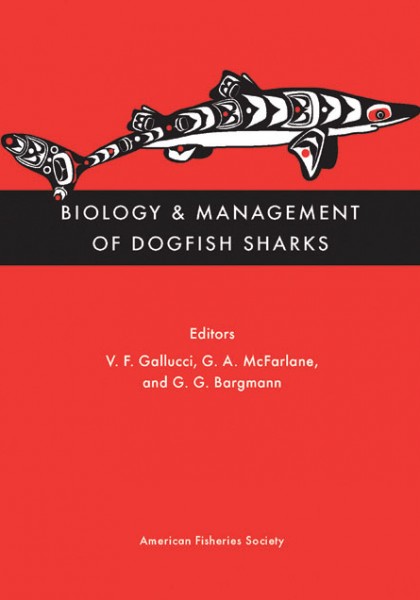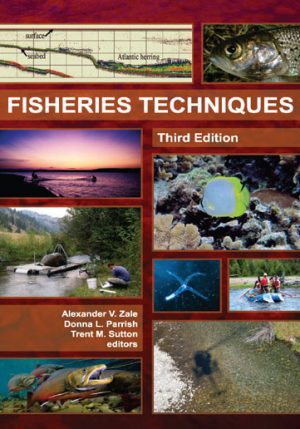Selected Writings of Sidney J. Holt: Documenting A Lifelong Pursuit of Sustainable and Profitable Fishing
$0.00 – $89.00
Description
Edited by Emory Anderson and Michael Earle
650 pages, hardcover, bibliography, index
ISBN-13: 978-1-934874-62-2
Published July 2021
doi: https://doi.org/10.47886/9781934874622
DESCRIPTION
This book, intended as a tribute to the life and accomplishments of one of the world’s premiere scientists in fisheries and whale biology, population dynamics, and stock —Sidney J. Holt— contains a cross-section of Holt’s writings from a career that spanned eight decades. Perhaps best known for his co-authorship, with Raymond Beverton, of the most-cited publication (in 1957) on quantitative fish stock assessment, On the Dynamics of Exploited Fish Populations, Holt’s work expanded from fisheries into whale assessments within the International Whaling Commission (IWC) and ultimately led to a moratorium on commercial whaling and to him being credited by some for having saved the great whales.
The book is a collection of 62 selected writings authored by Holt (sometimes in collaboration with one or more co-authors), some of which had been previously published in journals, books, and assorted venues, and many which had never been published. Being a very prolific writer, with 465 articles listed in a chronological bibliography included in the book, these selected writings barely touch the surface of Holt’s efforts. The major focus of much of the book reflects his long-standing concerns about the concept of maximum sustainable yield and its application for fisheries management—though his name is often associated with that concept, he was, for much of his life, a vigorous opponent of its pursuit, deeming it both unsustainable and unprofitable.
The book is organized into three sections each depicting a major sector of his working and writing career: 1) “Launching a legacy” (writings during his years at Lowestoft and early years at FAO; 1940s–1950s); 2) “Saving the great whales” (1960s–2000); and 3) “Getting back to first principles” (2006–2016). The majority of the articles in the second part were written for the IWC, while most in the third part concern the objectives of fisheries management in the context of the European Union’s Common Fisheries Policy.
For fisheries and whale scientists, as well as others interested in the history of fisheries and whaling science and management, this book is highly recommended as it captures the thinking of one of the world’s foremost scientists who played a very active role in this arena from the 1940s until his death at age 93 in 2019.
CONTENTS
Part I: Launching a Legacy
Foreword to Part I: Launching a Legacy
1 Some Observations on the Concept of “Maximum Equilibrium Catch” in Relation to Conservation Problems
2 Classification of International Conservation Problems
3 Observations on the Concept of Maximum Sustainable Yield as a Criterion for the Wise Exploitation of the Living Resources of the Sea
4 The Evaluation of Fisheries Resources by the Dynamic Analysis of Stocks, and Notes on the Time Factors Involved
Part II: Saving the Great Whales
Foreword to Part II: Saving the Great Whales
5 Establishing the Committee of Three
6 Special Committee of Three Scientists Final Report
7 Measures of Abundance of Antarctic Whale Stocks
8 Report of the Committee of Four Scientists, June 1964
9 The Maximum Sustainable Yield in Weight, and Related Matters
10 Stock Assessments of Minke Whales
11 Criteria for Management—Weight or Numbers? The Relevance of Whaling Effort
12 Whale Management Policy
13 Does the Bottlenose Whale Necessarily have a Sustainable Yield, and if So is It Worth Taking?
14 Assessment of Southern Hemisphere Minke Whales
15 A Possible Basis for Determining Limits to the Allowable Catch When the Degree of Density Dependence of the Net Recruitment Rate is Not Known
16 Some Implications of Maximum Sustainable Net Yield as a Management Objective for Whaling
17 A Simple Model of Pelagic Whaling
18 Reclassification of Protected Baleen Whale Stocks
19 Proposal for a Modified Management Policy
20 History of the Regulation of Southern Minke Whaling Scientific Advice and a Response of Industry
21 Maximum Sustainable Yield and Its Application to Whaling
22 Aspects of Determining the Stock Level for Maximum Sustainable Yield
23 The Classification of Whale Stocks and the Determination of Catch Limits under the Current IWC Management Procedure, with Limited Information
24 Some Considerations Regarding Second-stage Testing of Management Procedures
25 Are Measurements of Increase Rates of Depleted Stocks Useful in Estimating MSY Rate?
26 Sensitivity of Management Procedures to Discrepancies between Catch Limits and Catches
27 Implementation of a Revised Management Procedure for Commercial Whaling
28 Fin Whales in the North Atlantic: a Comprehensive Assessment
29 Minority Statement Advice on Selection of a Revised Management Procedure for Commercial Baleen Whaling
30 Selection of an RMP
31 Scientific Advice on the Management of Commercial Whaling
32 Thoughts about MSY Rates and Levels
33 Protocol for the Scientific Evaluation of Proposals to Cull Marine Mammals
34 ICES Involvement in Whaling and Whale Conservation, and Implications of IWC actions
35 Opening Statement by Dr. Sidney Holt on Behalf of NGOs Attending the Intersessional Meeting of the IWC in Rome in March 2009 and as the observer for the Antarctic and Southern Ocean Coalition (ASOC)
36 Science is Rooted in Conversations
Part III: Getting Back to First Principles
Foreword to Part III: Getting Back to First Principles
37 Commentary on “Implementing Sustainability in EU Fisheries through Maximum Sustainable Yield”
38 Commentary on Commission Staff Working Document
39 New Policy Objectives and Management Procedures for EU Fisheries: a Commentary and Suggestions to the Greens/European Free Alliance in the European Parliament
40 Statement to Fisheries Committee of the European Parliament
41 Does History Serve Conservation?
42 Greed Enthroned: Shall Future Generations Eat Fish or Whales?
43 Comments by Sidney J. Holt to the Commission of the European Communities on The Green Paper: Reform of the Common Fisheries Policy
44 Wherever is MSY?
45 Some Simple Thoughts about the Science of Fisheries Management
46 Brief for The Greens/EFA Group in the European Parliament on Reform of the EU Common Fisheries Policy (CFP): How to Achieve Sustainable and Profitable Fishing
47 The Benefits of a Fisheries Management Target for an Average Annual Catch Less than the Theoretical Maximum Sustainable Yield (MSY)
48 Application of “Less than MSY” Management Policy to So-called “Mixed Fisheries”
49 The Some Good and Mostly Bad about Maximum Sustainable Yield as a Management Target
50 What is a Fish Stock Assessment?
51 A Dummy’s Guide to Managing Fishing
52 Critique of the Objectives of the EU’s Common Fisheries Policy
53 Escaping the Stranglehold
54 A Comment on Management of European Fisheries for High Sustainable Yields, in Particular in the Baltic Sea
55 Oral Presentation to the Committee on Fisheries of the European Parliament during a Public Hearing on Maximum Sustainable Yield in Fisheries Management
56 Adjunct to Oral Presentation to the Committee on Fisheries of the European Parliament during a Public Hearing on Maximum Sustainable Yield in Fisheries Management
57 What is Overfishing?
58 North Sea Demersal Fisheries Management Consultation—EU
59 How Bad Science Impedes the Good: an Example
60 Suggestions Regarding Implementation of the Primary Management Objective of the Common
Fisheries Policy of the European Union
61 A “Less than Fmsy” Management Strategy
62 Comment on an EU Document Entitled: COM Baltic Plan Articles 4–5
Chronological Bibliography of Sidney J. Holt Publications and Writings
Index
Additional information
| Holt | Complete book (hard copy), Complete book (PDF download), Front Matter |
|---|







